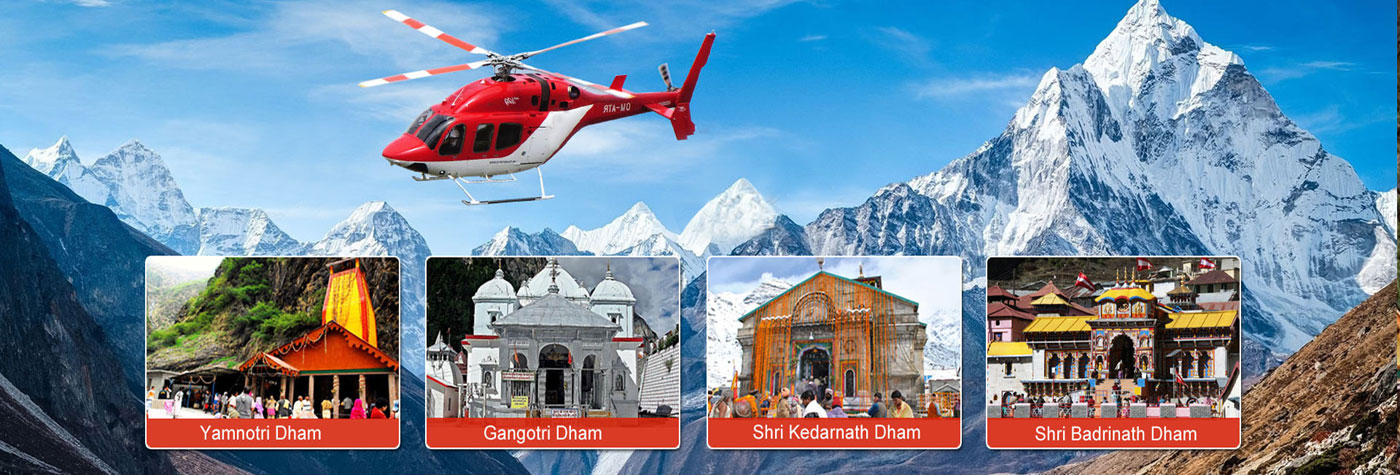Badrinath
Badrinath Dham is a majestic sight as well as the the most important of all the Char Dhams. Lakhs of tourist come every year to this sacred Badrinath town to seek blessings and to get a glimpse of the famous temple of Shri Badrinathji. Guarded on either side by the two mountains Nar and Narayan, the Neelkanth Peak provides a splendid backdrop to Badrinath, one of the ‘Four Dhams’. One of the most celebrated pilgrim spots in the country, it plays host to the famous Badrinath Temple. Legend has it that Lord Vishnu came to the area, called ‘Badri Van’, or the berry garden, to meditate after Narad rebuked the Lord for being immersed in worldly pleasures. The main deity is a meditating Lord Vishnu.
Facing the temple at the bank of Alaknanda River is a hot water spring known as "Tapt Kund", a bath in which is very refreshing to all travellers. Dedicated to Lord Vishnu, the temple of Shri Badrinathji, is 5 m high, built in the form of a cone with a small cupola of a gilt bull and spire. The temple opens every year in the month of April-May and closes for winters in the third week of November. Even though legend dates the temple back to the Vedic age, Guru Adi Shankaracharya has established the present temple. The temple has three parts - Garbha Grih (The Sanctum Sanctorum), Darshan Mandap (for pujas) and Sabha Mandap (for devotees to assemble).
Sandwiched between Nar and Narayan mountain ranges, Badrinath in the Chamoli district of Uttarakhand is naturally bestowed with pristine surroundings. One among the most sought after pilgrim centres in the Indian subcontinent, Badrinath is beautifully set in the backdrop of the colossal Neelkanth mountain peak. The term Badrinath is a derivative of badri, which means the place where beries grow abundantly.
A place, which holds so many myths and legends, Badrinath acquires predominance in the travel itinerary of a pilgrim. The popular belief is that Badarinath was the domain of Lord Shiva, and Lord Vishnu managed to unseat Shiva from here to Kedarnath. Another belief is that when Ganga made her descend to earth she split up in to twelve streams and one among the channels, Alakananda felt on Kedarnath. Sanctity and holiness of Badrinath festooned it with accolades since from the Vedic ages. This sacred abode of Nara-Narayana sages had been a revered seat and the Vedas like Srimad Bhagavatam, gave testimony to its devoutness.
It is not just shrines and pilgrimage that Badrinath offers. It proffers the awesome beauty of the snow clad mountain peaks and the surging landscapes of the Garhwal region. It is a scenic place with picture book sceneries, undulating peaks, sacred ponds and water bodies, Badrinath makes the visitor spellbound with its unparalleled gorgeousness. This majestic look of Badrinath is attributed much by the presence of the magnificent rivers Rishi Ganga and Alaknanda. Apart from the natural beauty, Badrinath presents excellent opportunity for those who love escapades and recreational activities.
Best Season / Best time to visit
Badrinath has a cool and chilly climate all through the year but the best time to visit is from May to June and again from September to October.
Winter (October to April) has chilly days with average minimum touching near 5°C. Minimum can touch sub zero levels and snowfall is very common. These months are not the perfect time for travelling.
Summer (May to June) are very pleasant with moderately cold climate, with average around 18°C. Summers is ideal for all sight seeing and the holy Badrinath pilgrimage.
Monsoon (July to mid-September) are accompanied with regular rains and also temperature drops down to 15°C. The region is prone to occasional landslides and travelling can be difficult.
The holy city of Badrinath is open for public views from May to October but the temple remains closed during the monsoon months as landslides are common and can mar the journey of the pilgrims. The region experiences pleasant and cool summer while winters are very chilly and snowfall is a regular occurrence.
 +91 9799050299
+91 9799050299 

